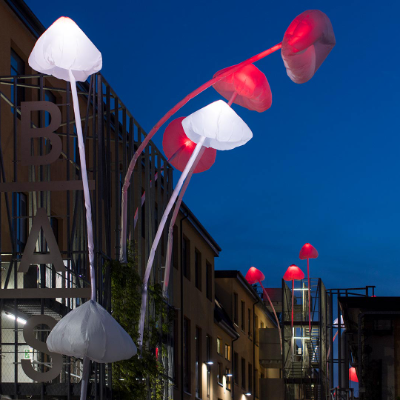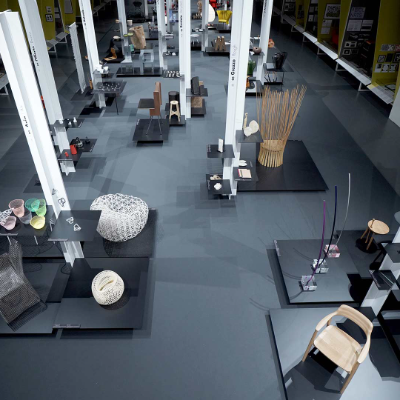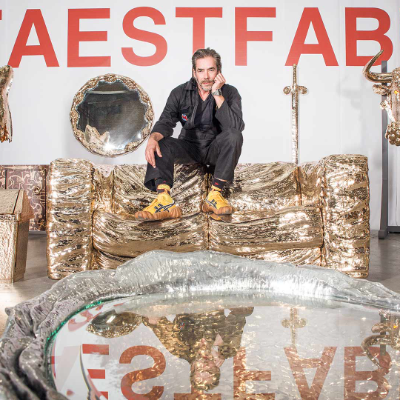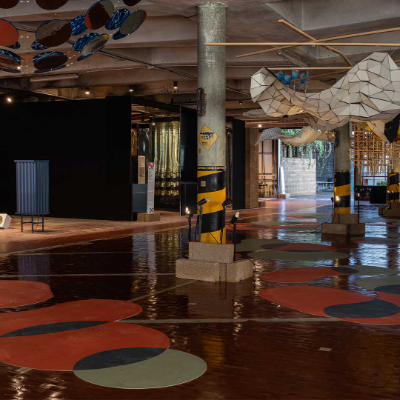Lodes is launching its first collaboration with Ron Arad, the internationally renowned artist, architect and designer, known for his iconic industrial pieces that have won multiple awards and been exhibited in the world’s most prestigious institutions. The result is Cono di Luce, a lamp design that marries Lodes’ technical know-how with Arad’s artistic flair. The partnership takes the stage at the highly aniticipated design festival, Milan design Week.
The company saw in Arad a figure who blends art, architecture and design. With his disruptive approach, Arad is able to uncover new realms in which objects break out of their typical typologies. With this in mind, Lodes aimed to not only overcome challenges but to embrace them as part of the design process to create the end product design.
Before embarking on the design phase, Lodes set the designer a challenge: to use borosilicate glass to design an iconic object. Arad consequently opted for a slender, truncated cone shape as the archetype, with a light source placed on top, hence its name Cono di Luce, meaning 'cone of light'. A continuous exchange between the company and the designer enabled a new design path to be found. Lodes met Arad’s sketch with an innovative use of PCB technology. Together, they harnessed this technology to translate its aesthetic and expressive qualities, creating a pattern that became the lamp’s graphic motif.
Lodes’ technical capabilities are clearly demonstrated in the development process. Lodes was able to transfer Arad’s intuitive response to the brief, as shown in his initial sketch, into a real lamp – finding a technical solution that solved critical issues while simultaneously fulfilling several functions. Arad comments, “When you look at it [Cono di Luce], first of all, I’m very happy that it’s legible. You can look at it and think you understand, you know, what you’re looking at. There’s a page locked in the glass cone. However, this page provides light through the cone and sort of glows in itself. There are lines which create a moiré.” Furthermore, the designer adds, “Sometimes you start with an idea and in the process of making it, you lose something. In this case, I don’t think we lost anything. If anything, we gained something. I am very happy to see this and I am very happy that through the interesting journey that we had getting here, you can still look at the original sketches and compare it with the end product and think that it’s the same.”
Owing to Lodes’ expertise and wider problem solving skills so synonymous with Italian design thinking, the company was able to find an innovative solution that offers an affordable product design with high luminous efficiency. Cono di Luce is a lighting design characterised by a transparent Pyrex cone that houses a printed circuit board (PCB) inside and a frame, also made of PCB, but with a greater thickness to provide structural support for the lamp. The PCB is the result of a process that includes 33 steps and several layers composed of fibreglass and copper for the LED chip electric circuits, which by nature have both translucent and opaque areas. A sheet of fibreglass, which is extremely thin, flexible, and insulating, on which a copper path is smeared, acts as a conductor of the electrical polarity, which on reaching the LED allows them to emit light. Please find more information about the PCB board here.
Lodes’ intuition was to understand the possibility of exploiting the decorative potential of the material’s degree of translucency, to arrive at the design characterised by stripes, based on the artist’s drawing. This allowed Arad to play with areas of dark and light bands and with the moiré effect given by the overlapping of the stripes. Lodes was able to employ this aesthetic to design an electrical circuit connecting more than 200 LED chips. The frame, also designed by Lodes, consists of a white rigid PCB that performs three functions: refracting light so that the luminous effect of the lamp can be uniform, connecting electric circuits that give power to the LEDs and finally, acting as a mechanical suspension of the product itself to ensure the sheet remains at the right height inside the cone.
Another distinctive element of Cono di Luce is the customisable frame that holds the sheet placed inside the cone, and which bears the name of the product. The frame details both Arad’s and Lodes’ names. Available in two versions (pendant and table lamps) and three finishes (red, grey and gold), Cono di Luce’s distinctive look and versatility make it an ideal solution for both residential settings and public spaces. The pendant lamp can stand alone or in a group placing above countertops or islands, gently illuminating the surrounding space. In its table lamp form, it features a black dimmer switch that allows users to adjust the light through a simple touch.
Arad prioritised the red version to offer an impactful statement piece, featuring his signature on the outer flap. The grey version is more subtle, with the signature and product name positioned discreetly on the inside of the sheet, allowing the product to adapt to various settings. In continuity with the CMF Lodes, there is also a third version which features a grey finish on the inside and a gold finish on the outside, obtained through the deposition of gold, to give the product its preciousness.
The result is a powerful lamp in its seemingly simple design. When turned on, the product reveals its full decorative capacity - an optical item made of light, shadows and superimpositions, the work of Arad’s creative vision and Lodes’ ability to master and manage technology.
Stay tuned with STIR's coverage of Milan Design Week 2024 which showcases the best of exhibitions, studios, designers, installations, brands and events to look out for. Explore EuroCucina and all the design districts—Fuorisalone, 5vie Design Week, Isola Design Week, Brera Design District and Porta Venezia Design District.






 Sign in with email
Sign in with email








What do you think?